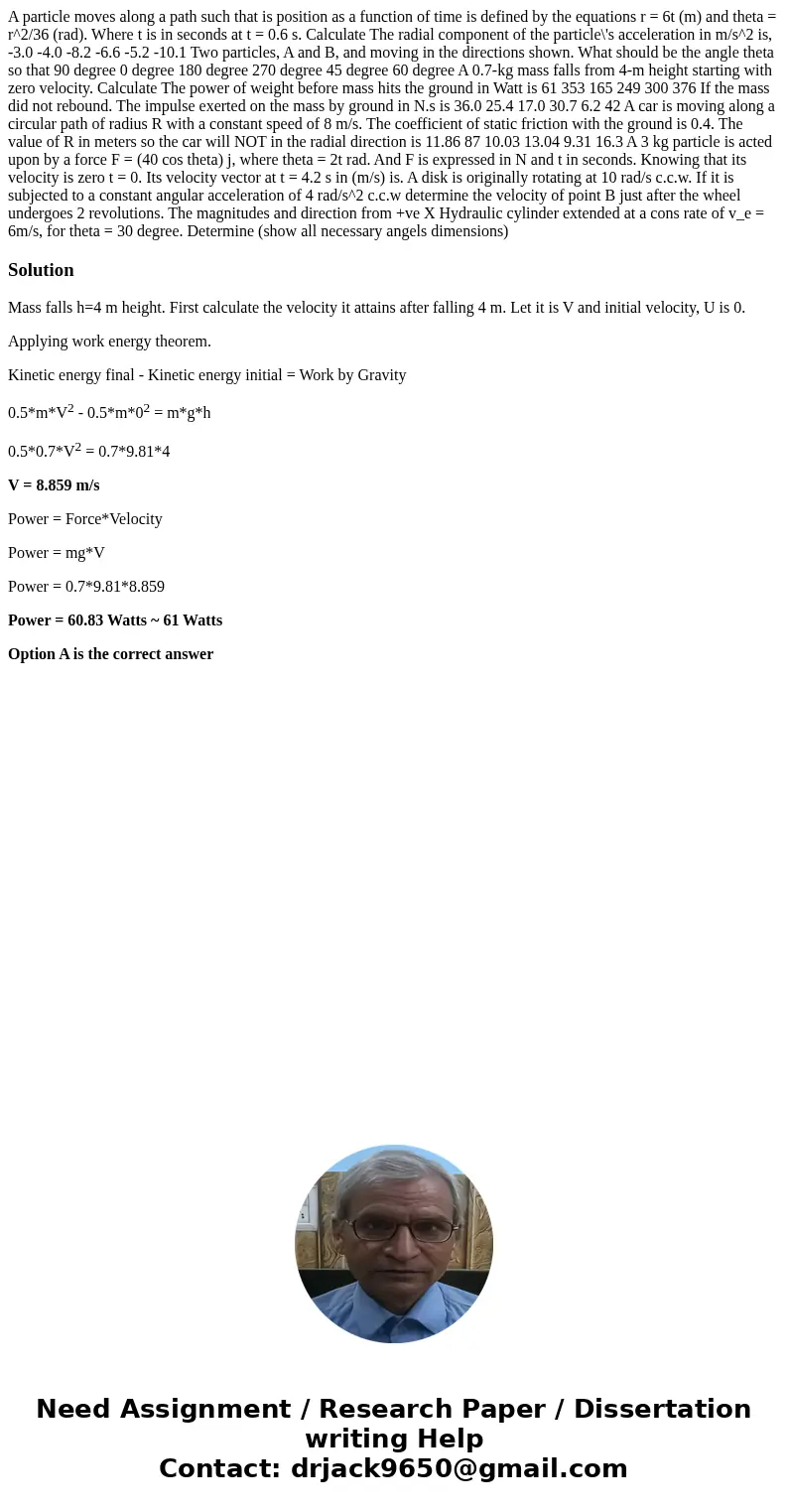A particle moves along a path such that is position as a fun
A particle moves along a path such that is position as a function of time is defined by the equations r = 6t (m) and theta = r^2/36 (rad). Where t is in seconds at t = 0.6 s. Calculate The radial component of the particle\'s acceleration in m/s^2 is, -3.0 -4.0 -8.2 -6.6 -5.2 -10.1 Two particles, A and B, and moving in the directions shown. What should be the angle theta so that 90 degree 0 degree 180 degree 270 degree 45 degree 60 degree A 0.7-kg mass falls from 4-m height starting with zero velocity. Calculate The power of weight before mass hits the ground in Watt is 61 353 165 249 300 376 If the mass did not rebound. The impulse exerted on the mass by ground in N.s is 36.0 25.4 17.0 30.7 6.2 42 A car is moving along a circular path of radius R with a constant speed of 8 m/s. The coefficient of static friction with the ground is 0.4. The value of R in meters so the car will NOT in the radial direction is 11.86 87 10.03 13.04 9.31 16.3 A 3 kg particle is acted upon by a force F = (40 cos theta) j, where theta = 2t rad. And F is expressed in N and t in seconds. Knowing that its velocity is zero t = 0. Its velocity vector at t = 4.2 s in (m/s) is. A disk is originally rotating at 10 rad/s c.c.w. If it is subjected to a constant angular acceleration of 4 rad/s^2 c.c.w determine the velocity of point B just after the wheel undergoes 2 revolutions. The magnitudes and direction from +ve X Hydraulic cylinder extended at a cons rate of v_e = 6m/s, for theta = 30 degree. Determine (show all necessary angels dimensions) 
Solution
Mass falls h=4 m height. First calculate the velocity it attains after falling 4 m. Let it is V and initial velocity, U is 0.
Applying work energy theorem.
Kinetic energy final - Kinetic energy initial = Work by Gravity
0.5*m*V2 - 0.5*m*02 = m*g*h
0.5*0.7*V2 = 0.7*9.81*4
V = 8.859 m/s
Power = Force*Velocity
Power = mg*V
Power = 0.7*9.81*8.859
Power = 60.83 Watts ~ 61 Watts
Option A is the correct answer

 Homework Sourse
Homework Sourse